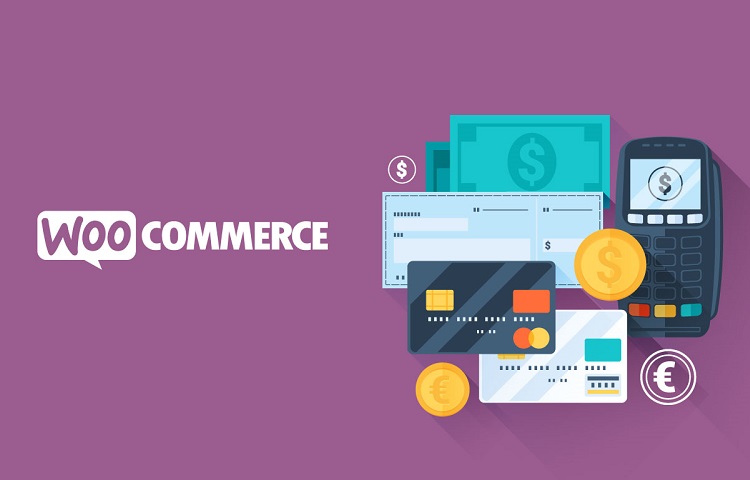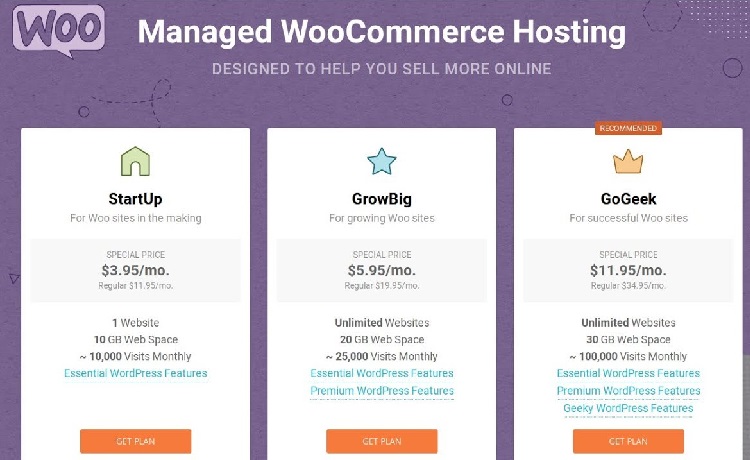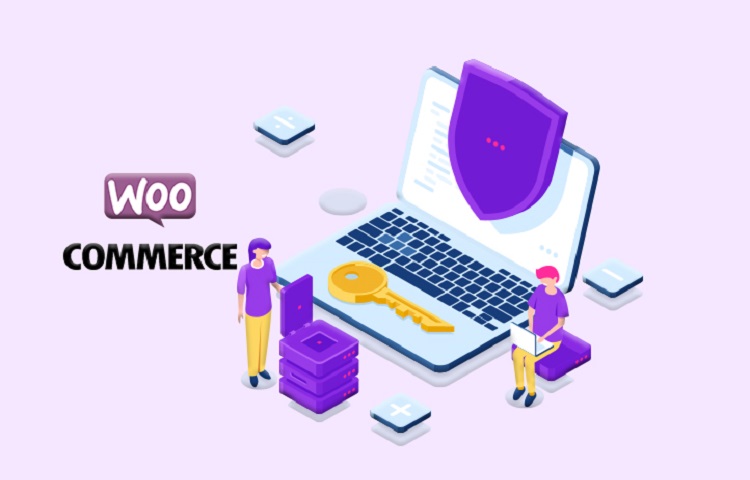Woocommerce Pricing Guide: The Fees to Know

When it comes to e-commerce, your store won’t get very far without practical and efficient payment options for your customers to use.
WooCommerce is one of the most popular plug-ins used by e-commerce stores that help you give customers what they need in this area, and they have a range of both free and priced services available.
How much does it cost to use WooCommerce?
The overall cost of WooCommerce depends on what features you utilise for your e-commerce store. As they offer many different add-ons that each cost a small fortune. The cost soon adds up. Then you have to add the cost of hosting, where you can expect to pay between $10 and $20 a month depending on how much you use.
You could also go with Woocomer managed Plans. They offer a basic free plan for starters and then options to upgrade in areas like add-ons, extensions, security, and plug-ins, so you can choose how much you want to spend. If you’ve been looking into WooCommerce for your online store, there’s a lot to consider when it comes to pricing.
We’re here to break it down into segments so you can see what necessary features you should pay for and those that are nice additions but might not be worth spending on if it’s not right for your business.
What Does WooCommerce Offer?
WooCommerce is a plug-in that integrates with WordPress websites. So it essentially lets you turn your WP site into a functional online store.
The plug-in was developed in 2011 by Woothemes. Today, it powers more than 99% of the e-commerce websites running on WordPress in the US, Canada, and the UK.
When you choose to integrate WooCommerce for your store and install the plugin. It runs a set-up wizard that helps with setting up everything to do with the shipping and payment options you can offer your customers. You end up with a secure and easy way for customers to pay, which adds a touch of professionalism to your store.
Within WooCommerce there are lots of options for customisation and flexibility with how you can use it. You can use their setup wizard to select what you need and disregard options that might not be needed on your site, so you’re only paying for the services you’re using.
This type of plug-in is ideal for small to large businesses and is like having an online store created for you right out of the box. The most basic plan is free but to make the most of what WooCommerce offers, some people choose at least a few add-ons and extensions to get their store up and running.
We run an eCommerce store that use the free version of WooCommerce and a few free add-on from the WordPress repository. If you are a bit tecky you easily set one up yourself. Or, you could find a done-for-you service and have a Woocomerce webstore ready built for you.
The WooCommerce Free Plan
When you first sign up at WordPress.com, you’ll be given a range of options and features to choose from.
They offer a starter plan that’s free of charge but it’s not the greatest if you’re trying to build a fully functional e-commerce store, so should only be seen as the base to which you’ll start with.
Within the free plan, you’ll get access to the WooCommerce software as well as WordPress, both of which are free. As you’ll need a server to run your website, this has to be paid for, as well as a domain name.
However, WooCommerce offers many free themes you can use with the website and basics to use for ecommerce, but not enough to run a store under every circumstance.
Our Recommend Tech Set-up: (T-Shirt Shop) We use a self hosted WordPress website (wordpress.org) on our own domain name. We purchase a premium theme and added the free version of WooCommerce as a plugin via WordPress. We added a free Stripe plugin and set up the payments. We then used the Dropshirt Dropshipping plugin to add our custom print fields. We set up a shipping Zone for Australia and created two shipping options.
The Costs of WooCommerce
It’s essentially free to build on what WooCommerce offers. After sign-up or install, you’ll be taken through a set-up and wizard that can help you create your store.
With each of these categories, there are costs to consider, and you can customise what’s offered on your site and how much you want to spend.
Domain and Hosting
Owning a website isn’t free and you’ll need to pay a fee for hosting, or the place in cyberspace where your ecommerce store lives.
Generally, you can expect this to cost around $5 – $10 per month, depending on what comes with the hosting.
The domain or URL your website uses also costs, and sometimes this is included with a host in their annual fee. Otherwise, you might pay another up to $29 per year for this, and it’s a fee that you can’t avoid.
Theme
There are a range of free themes to choose from when you use WooCommerce so this is an area you can save on if you don’t want to upgrade to anything fancy.
The cost for their higher-end themes is over $USD100 a pop, while some start at zero so there’s a lot of range. We include a high end theme with this done-for-you package.
For one of these ready-made themes, you’ll still get the chance to customise it and make it more personal to you. If you want absolute professionalism and the best customer experience, it might be worth considering our high-range option.
Add-Ons and Extensions
This is where WooCommerce stands out and allows you to fully customise a store to suit your needs.
These are just some of the available features you’ll get to use when you put WooCommerce to work:
- Options of many payment gateways including PayPal, bank transfer, Stripe, checks, and even cash on delivery. Most of these come with no setup fees but will charge a percentage of every sale instead.
- A customisable check-out that lets you choose how the whole process goes down for your customers. You can include a secure checkout, set what countries you sell to, and change URLs to suit whatever step they’re at.
- The geo-location service means you’ll be able to determine where your customers live and charge them accordingly, including taxes and shipping. You can also choose the currency you want to trade in and keep it set for the store.
- Smart features like a cart redirection option so customers can see what they have in their carts once they add something, hiding shipping costs until they enter their address, and options for product reviews to help boost sales. Many of these are free and can make a huge difference for customers.
- Shipping integration tools that allow you to work with different options like drop shipping or managing your inventory through WooCommerce. They start from a few dollars a month up to $99 for a table rate shipping extension.
- Tools you can use in the background like tax management, WordPress SEO to improve traffic to your site, different product types and variations, and inventory control. There are some free tools available and others paid for monthly or as a one-off fee.
Plugin Extensions
A plug-in is an add-on that might not be necessary but can help with the overall function, look and feel of your site. These are categorised into areas like marketing, growth and design, with lots of options in each.
While the cost of a standard plug-in extension varies depending on how in-depth it is. They range in price from free to many hundreds of dollars. See WooCommerce plugins here
Security
If you’ve chosen a web host already, there’s a good chance that it offers some basic SSL certificates in their plans.
However, when you’re running an e-commerce store, bigger is better, and your customers want to know that they’re protected during transactions made on your site. Although WooCommerce doesn’t deal with added security options, there are still lots out there.
There are quite a few options out there you can purchase to use with your WooCommerce site, including advanced SSL packages that offer more protection for at least $150 a year, or specific products like malware protection that can range from $20 to $500 per year, and beyond.
However you only need to install the free security plugins if you’re careful. The three rules are: 1. Don’t use admin or your site name as the username. 2. Have a strong (hard ie: hA56s8dBv$f)&bsGtrds1) password. 3. Use brute force protection software like a login limiter.
What you choose is up to you, but the more you can offer a customer in terms of safety and security, the better.
Developer Fees
This part won’t apply to everyone but it will be required by some mid to large e-commerce stores.
For smaller businesses, all of the developmental parts you need are covered in the costs, and there’s no need to get too deep because you can use everything WooCommerce has to offer.
For others, you could spend thousands enlisting the help of a developer to get you to improve your site. This includes design, functionality, and overall feel, making it more appealing to customers and smoother running for you and them.
WooCommerce has a list of verified developers you can outsource with or you can find your own, but expect to pay a few thousand for a good one.
Popular WooCommerce Alternatives
Although WooCommerce is a hugely popular way to build an online store, it’s not the only option.
These are some other choices you have for helping you create an e-commerce business and easy payment options for your customers.
- Shopify: One of the most famous and in-depth website builders, Shopify is another good choice for your e-commerce needs. With Shopify, you can manage inventory, sell across many channels, and use a range of sales features for your store, but they’re the most expensive at almost $30 for the base plan.
- Big Commerce: This is a huge contender in ecommerce and isn’t just for customers but also features a lot of sales tools you can use to grow your brand. BigCommerce prices their services a little differently, with almost everything available in the plan, and the most basic one starts at around $25 a month.
- Wix eCommerce: The Wix plugin works for all websites and not just WordPress, and is one of the biggest around. Wix eCommerce makes it easy with a drag and drop process and their most basic plan costs $20 a month, so it’s one of the more expensive options.
- WP eCommerce: This is the original ecommerce plugin that WordPress offered and it’s still available today. WP eCommerce is an open-source solution for your site and has features like tax management, secure payments, shipping modules, and reporting. This plug-in has a free plan with the option to upgrade certain parts, just like WooCommerce.
WooCommerce Priced to Please
WooCommerce is a cost-effective way to add a professional touch to your website and ensure your customers have a secure and easy way to check out.
If you want to integrate WooCommerce into your WordPress site, there’s a stack of options and costs you can choose from so it’s fully customisable to your needs.
Related Questions
Running an e-commerce store has never been easier thanks to plug-ins and services like those that WooCommerce offers.
If you’re brand new to the e-commerce game and still have questions about how it all works, we’ve answered a few common ones that might be able to help you out.
What Is An E-Commerce Payment Gateway?
Many e-commerce stores used a payment gateway that authorises the payment from the buyer to the seller and these services come with fees.
With one installed on your site, you’ll be able to securely request payment from the buyer’s bank for the goods they purchased which is then quickly approved and sent to your bank account.
How Do I Accept Online Payments?
If you want to start accepting payments through your e-commerce site, there are lots of options you can offer customers.
Some of the most commonly used payment methods in e-commerce are PayPal, eChecks, credit and debit cards, email invoicing, online payment gateways, and mobile payments.
What Are the Biggest Ecommerce Sites?
When it comes to Australian ecommerce, some stores perform better than others in online traffic and sales, and have held these places steadily in the last few years.
Amazon AU, eBay AU, Woolworths, Coles, JB Hi-Fi, and Kogan are the biggest ecommerce sites in the country, but these numbers have the potential to change at any given time.





